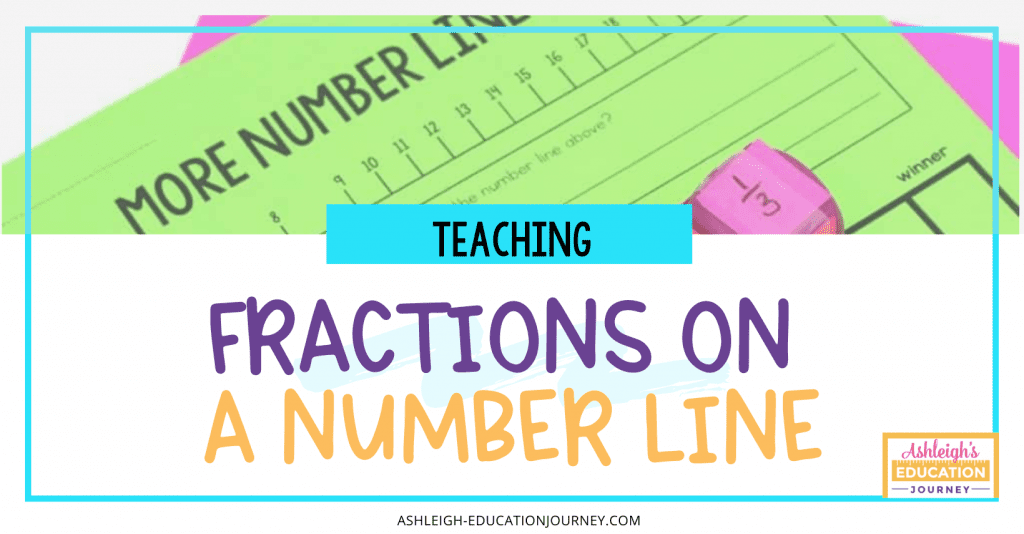
This post highlights four of my favorite lessons for teaching fractions on a number line. These are lessons I use with my fourth grade students. When I was teaching third grade, I used very similar lessons and incorporated a bit more practice. You can read more about third grade fractions here. You can find the fourth grade lessons here.
Introducing Fractions on a Number Line
Cuisenaire Rods are a great way to teach fractions on a number line. In the activity below, students use Cuisenaire Rods to build number lines. They used two pieces to create halves, three rods to create thirds, four rods to create fourths, etc. A common misconception was that students felt like the rods needed to fill the entire number line. They were under the impression that the number line dictated where the zero and one should be placed, rather than the value of the rods. This gave us the opportunity for great discussions.
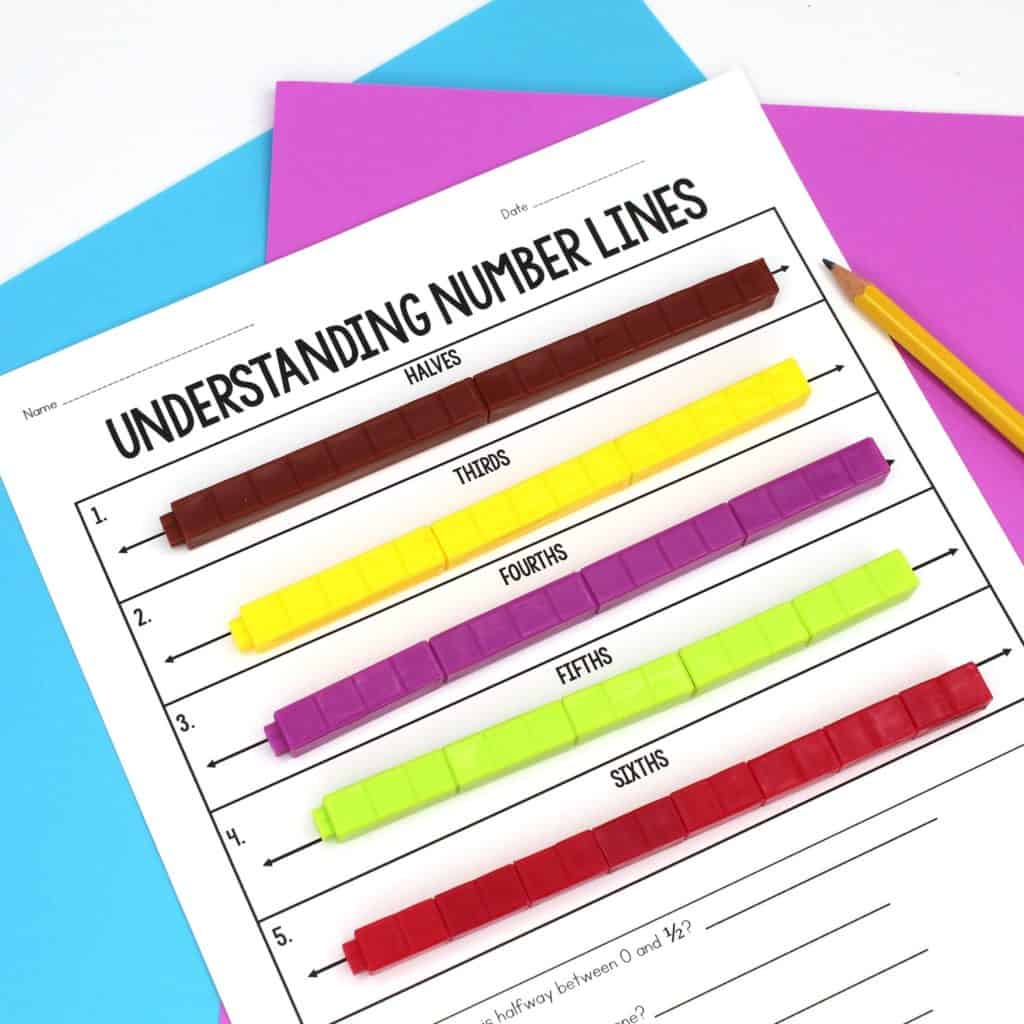
If you’re teaching virtually, students can use digital Cuisenaire Rods for the activity. I like to follow the lesson by having students work with numbers greater than one on a number line. It’s important for students to recognize that number lines with fractions don’t stop at one.
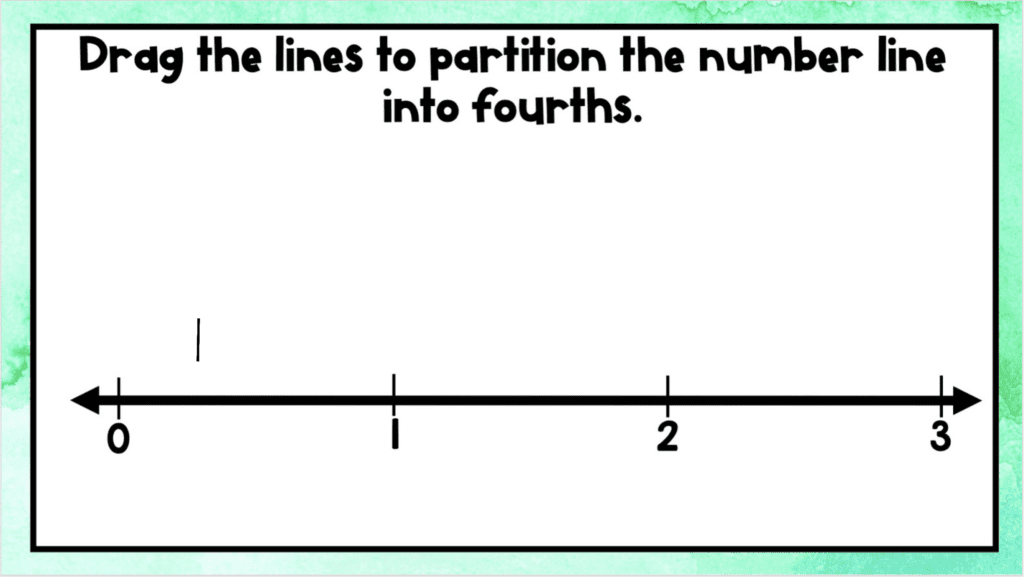
Another lesson for teaching fractions on a number line has students place given fractions and mixed numbers on a number line. You can use long construction paper, calculator tape, sentence strips, or taped together paper for this lesson. Students place the fractions on the TOP part of the number line and mixed numbers on the BOTTOM part of the number line.
This can be challenging, because students need to pay close attention to the denominator of each fractions. Not only will students have to determine which whole numbers the fraction falls between but also what color rod to use to partition that section of the number line.

If you’re teaching digitally, students can create their number line on the Google Slides. It’s important to use the wide screen layout, so students have plenty of room for all of the numbers on the number line.
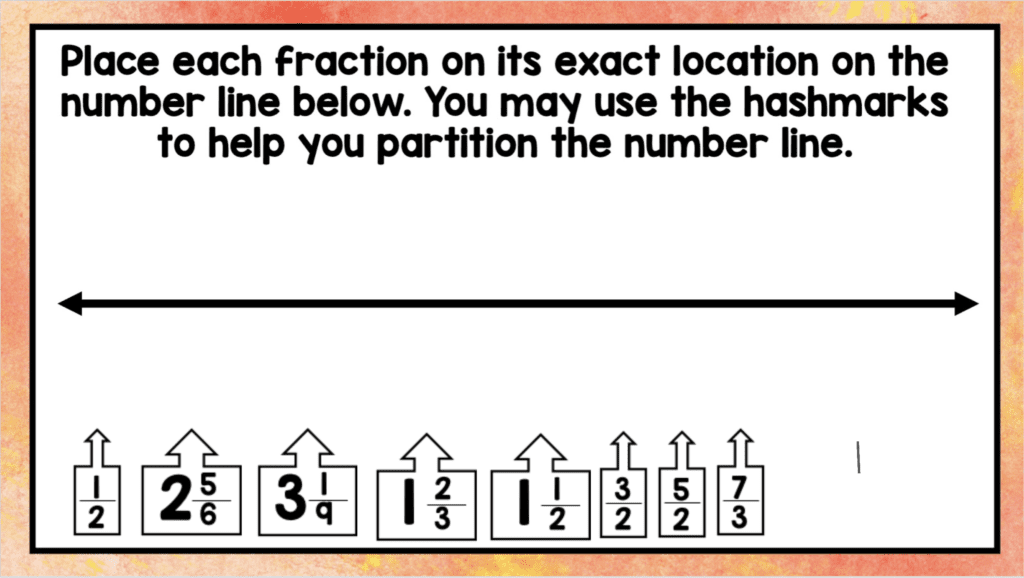
A great way to review number lines is through this game-like activity. In the first part of the lesson, students should notice that the number line does not have equal increments, which is critical for a number line. Students should explain how/why that is a problem and rewrite the number line correctly.
In the bottom section, Player 1 rolls a die and uses the fraction shown on the die to determine which number line to start with. For example, if Player 1 rolled 1/3, she begins at zero and draws and arc to show the hop from zero to 1/3. Player 1 also writes the unit fraction rolled. Player 2 repeats the same steps. On a player’s second roll, s/he will either start with a new number line. If the fraction rolled is the same as another roll, the player will start at where s/he rolled to on the previous roll. For example, if Player 1 rolled 1/3 again, she begins at 1/3 and hops another 1/3 to 2/3. If a player rolls a fraction s/he no longer needs, the player loses that turn. Play continues until one player makes it to one on all four number lines.
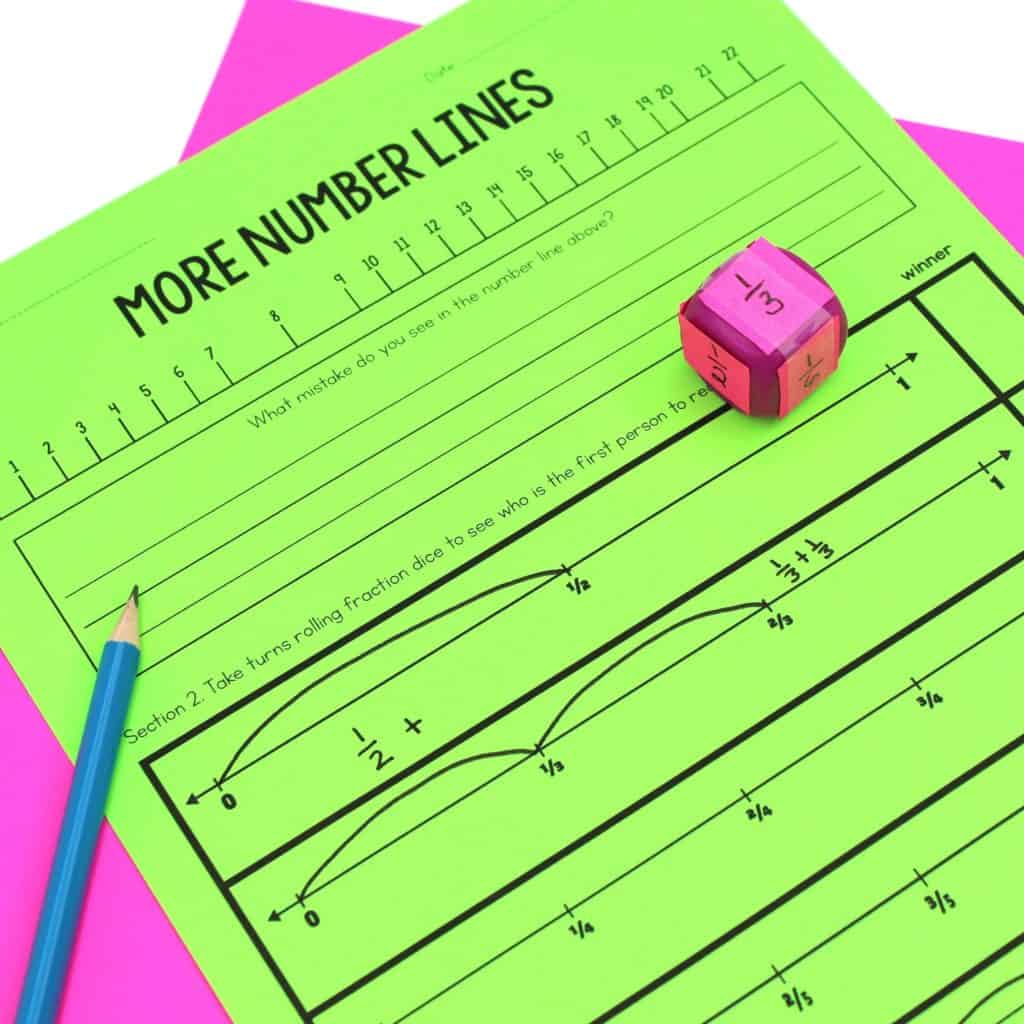
This is a fun way to give students extra practice, as well as to reinforce unit fractions.
Incorporating Art
A fun way to incorporate art is through this fractions on a number line activity. Students can do this lesson on paper, or they can complete it digitally. Either way they do it, the lesson is a lot of fun!
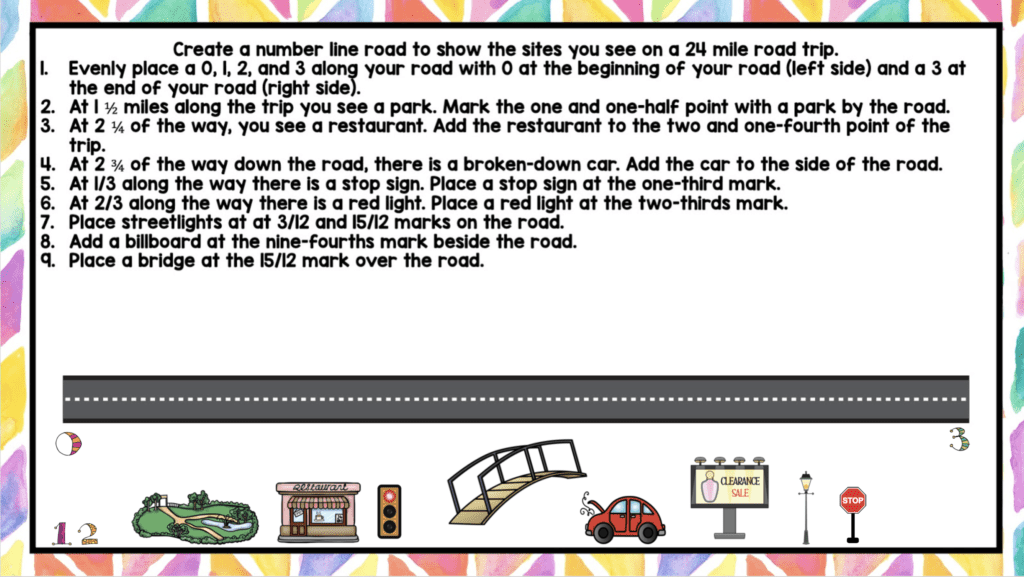
If you’re looking for more ideas on teaching fractions, be sure to check out this post. It will take you to resources for teaching equivalent fractions, comparing fractions, adding and subtracting fractions, and multiplying fractions by whole numbers-all of which include fractions on a number line. To go back to the home post on teaching fractions click here.


